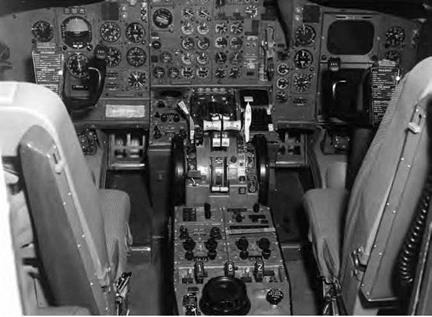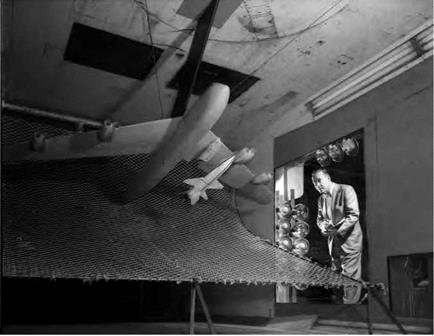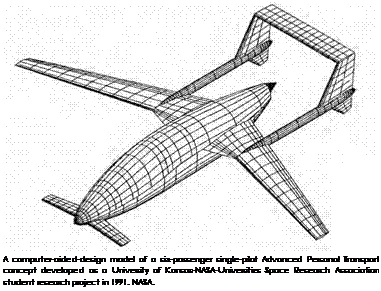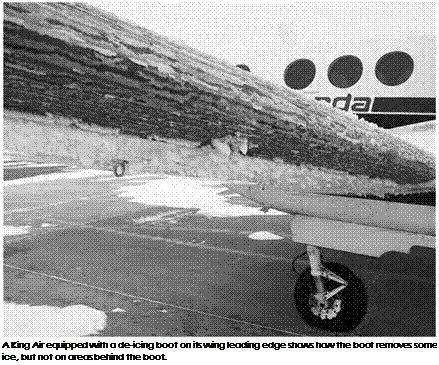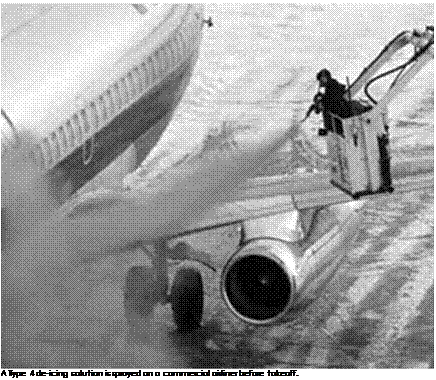 The history of composite development reveals at least as many false starts and technological blind alleys as genuine progress. Leo Baekeland, an American inventor of Dutch descent, started a revolution in materials science in 1907. Forming a new polymer of phenol and formaldehyde, Baekeland had succeeded in inventing the first thermosetting plastic, called Bakelite. Although various types of plastic had been developed in previous decades, Bakelite was the first commercial success. Baekeland’s true breakthrough was inventing a process that allowed the mass production of a thermosetting plastic to be done cheaply enough to serve the mechanical and fiscal needs of a huge cross section of products, from industrial equipment to consumer goods.
The history of composite development reveals at least as many false starts and technological blind alleys as genuine progress. Leo Baekeland, an American inventor of Dutch descent, started a revolution in materials science in 1907. Forming a new polymer of phenol and formaldehyde, Baekeland had succeeded in inventing the first thermosetting plastic, called Bakelite. Although various types of plastic had been developed in previous decades, Bakelite was the first commercial success. Baekeland’s true breakthrough was inventing a process that allowed the mass production of a thermosetting plastic to be done cheaply enough to serve the mechanical and fiscal needs of a huge cross section of products, from industrial equipment to consumer goods.
It is no small irony that powered flight and thermosetting plastics were invented within a few years of each other. William F. Durand, the first Chairman of the NACA, the forerunner of NASA, in 1918 summarized the key structural issue facing any aircraft designer. Delivering the sixth Wilbur Wright Memorial Lecture to the Royal Aeronautical Society, the former naval officer and mechanical engineer said, "Broadly speaking, the fundamental problem in all airplane construction is adequate strength or function on minimum weight.” [648] A second major structural concern, which NACA officials would soon come to fully appreciate, was the effect of corrosion on first wood, then metal, structures. Thermosetting plastics, one of two major forms of composite materials, present a tantalizing solution to both problems. The challenge has been to develop composite matrices and production processes that can mass-produce materials strong enough to replace wood and metal, yet affordable enough to meet commercial interests.
While Baekeland’s grand innovation in 1907 immediately made strides in other sectors, aviation would be slow to realize the benefit of thermosetting plastics.
The substance was too brittle and too week in tensional strength to be used immediately in contemporary aircraft structures. But Bakelite eventually found its place by 1912, when some aircraft manufacturers started using the substance as a less corrosive glue to bind the joints between wooden structures.[649] The material shortages of World War I, however, would force the Government and its fledgling NACA organization to start considering alternative sources to wood for primary structures. In 1917, in fact, the NACA began what would become a decades-long effort to investigate and develop alternatives to wood, beginning with metal. As a very young bureaucracy with few resources for staffing or research, the NACA would not gain its own facilities to conduct research until the Langley laboratory in Virginia was opened in 1920. Instead, the NACA committee formed to investigate potential solutions to materials problems, such as a shortage of wood for war production of aircraft, and recommended that the Army and the Bureau of Standards study commercially available aluminum alloys and steels for their suitability as wing spars.[650]
 Even by this time, Bakelite could be found inside cockpits for instruments and other surfaces, but it was not yet considered as a primary or secondary load-bearing structure, even for the relatively lightweight aircraft of this age. Perhaps the first evidence that Bakelite could serve as an instrumental component in aircraft came in 1924. With funding provided by the NACA, two early aircraft materials scientists— Frank W. Caldwell and N. S. Clay—ran tests on propellers made of Micarta material. The material was a generational improvement upon the phenolic resin introduced by Baekeland. Micarta is a laminated fabric—in this case cotton duck, or canvas—impregnated with the Bakelite resin.[651] Caldwell was the Government’s chief propeller engineer through 1928 and later served as chief engineer for Hamilton Standard. Caldwell is credited with the invention of variable pitch propellers during the interwar period, which would eventually enable the Boeing Model 247 to achieve altitudes greater than 6,000 feet, thus clearing the Rocky Mountains and becoming a truly intercontinental aircraft. Micarta had already served
Even by this time, Bakelite could be found inside cockpits for instruments and other surfaces, but it was not yet considered as a primary or secondary load-bearing structure, even for the relatively lightweight aircraft of this age. Perhaps the first evidence that Bakelite could serve as an instrumental component in aircraft came in 1924. With funding provided by the NACA, two early aircraft materials scientists— Frank W. Caldwell and N. S. Clay—ran tests on propellers made of Micarta material. The material was a generational improvement upon the phenolic resin introduced by Baekeland. Micarta is a laminated fabric—in this case cotton duck, or canvas—impregnated with the Bakelite resin.[651] Caldwell was the Government’s chief propeller engineer through 1928 and later served as chief engineer for Hamilton Standard. Caldwell is credited with the invention of variable pitch propellers during the interwar period, which would eventually enable the Boeing Model 247 to achieve altitudes greater than 6,000 feet, thus clearing the Rocky Mountains and becoming a truly intercontinental aircraft. Micarta had already served
as a material for fixed-pitch blades in World War I engines, including the Liberty and the 300-horsepower Wright.[652] Fixed-pitch blades were optimized neither for takeoff or cruise. Caldwell wanted to allow the pilot to change the pitch of the blade as the airplane climbed, allowing the pitch to remain efficient in all phases of flight. Using the same technique, the pilot could also reverse the pitch of the blade after landing. The propeller blades now functioned as a brake, allowing the aircraft to operate on shorter runways. Finding the right material to use for the blades was foremost among the challenges for Caldwell and Clay. It had to be strong enough to survive the stronger aerodynamic forces as the blade changed its pitch. The extra strength had to be balanced with the weight of the material, and metal alloys had not yet advanced far enough in the early 1920s. However, Caldwell and Clay found that Micarta was suitable. In an NACA technical report, they concluded: "The reversible and adjustable propeller with micarta blades. . . is one of the most practical devices yet worked out for this purpose. It is quite strong in all details, weighs very little more than the fixed pitch propeller and operates so easily that the pitch may be adjusted with two fingers on the control level when the engine is running.” The authors had performed flight tests comparing the same aircraft and engine using both Micarta and wooden propeller blades. The former exceeded the top speed of the wooden propeller by 2 miles per hour (mph), while turning the engine at about 120 fewer revolutions per minute (rpm) and maintaining a similar rate of climb. The Micarta propeller was not only faster, it was also 7 percent more fuel efficient.[653]
 The propeller work on Micarta showed that even if full-up plastics remained too weak for load-bearing applications, laminating wood with plastic glues provided a suitable alternative for that era’s demands for structural strength in aircraft designs. While American developers continued to make advances, critical research also was occurring overseas. By the late 1920s, Otto Kraemer—a research scientist at Deutsche Versuchsanstalt fur Luftfahrt (DVL), the NACA’s equivalent body in Germany—had started combining phenolic resins with paper or cloth. When this fiber-reinforced resin failed to yield a material with a structural stiffness superior to wood, Kraemer in 1933 started to investigate
The propeller work on Micarta showed that even if full-up plastics remained too weak for load-bearing applications, laminating wood with plastic glues provided a suitable alternative for that era’s demands for structural strength in aircraft designs. While American developers continued to make advances, critical research also was occurring overseas. By the late 1920s, Otto Kraemer—a research scientist at Deutsche Versuchsanstalt fur Luftfahrt (DVL), the NACA’s equivalent body in Germany—had started combining phenolic resins with paper or cloth. When this fiber-reinforced resin failed to yield a material with a structural stiffness superior to wood, Kraemer in 1933 started to investigate
birch veneers instead as a filler. Thin sheets of birch veneer impregnated with the phenolic resin were laminated into a stack 1 centimeter thick. The material proved stronger than wood and offered the capability of being molded into complex shapes, finally making plastic a viable option for aircraft production.[654] Kraemer also got the aviation industry’s attention by testing the durability of fiber-reinforced plastic resins. He exposed 1 – millimeter-thick sheets of the material to outdoor exposure for 15 months. His results showed that although the material frayed at the edges, its strength had eroded by only 14 percent. In comparison to other contemporary materials, these results were observed as "practically no loss of strength.”[655] In the late 1930s, European designers also fabricated propellers using a wood veneer impregnated with a resin varnish.[656]
 A critical date in aircraft structural history is March 31, 1931, the day a Fokker F-10A Trimotor crashed in Kansas, with Notre Dame football coach Knute Rockne among the eight passengers killed. Crash investigators determined that the glues joining the wing strut to the F-10A’s fuselage had been seriously deteriorated by exposure to moisture. The cumulative weakening of the joint caused the wing to break off in flight. The crash triggered a surge of nationwide negative publicity about the weaknesses of wood materials used in aircraft structures. This caused the aviation industry and passengers to embrace the transition from wood to metal for airplane materials, even as progress in synthetic materials, especially involving wood impregnated with phenolic resins, had started to develop in earnest.[657]
A critical date in aircraft structural history is March 31, 1931, the day a Fokker F-10A Trimotor crashed in Kansas, with Notre Dame football coach Knute Rockne among the eight passengers killed. Crash investigators determined that the glues joining the wing strut to the F-10A’s fuselage had been seriously deteriorated by exposure to moisture. The cumulative weakening of the joint caused the wing to break off in flight. The crash triggered a surge of nationwide negative publicity about the weaknesses of wood materials used in aircraft structures. This caused the aviation industry and passengers to embrace the transition from wood to metal for airplane materials, even as progress in synthetic materials, especially involving wood impregnated with phenolic resins, had started to develop in earnest.[657]
In his landmark text on the aviation industry’s transition from wood to metal, Eric Schatzberg sharply criticizes the ambivalence of the NACAs leadership toward nonmetal alternatives as shortsightedness. For example, "In the case of the NACA, this neglect involved more than passive ignorance,” Schatzberg argues, "but rather an active rejection of research on the new adhesives.” However, with the military, airlines, and the traveling public all "voting with their feet,” or, more precisely, their bank accounts, in favor of the metal option, it is not difficult to understand the NACA leadership’s reluctance to invest scarce resources to develop
wood-based synthetic aircraft materials. The specimens developed during this period clearly lacked the popular support devoted to metal. Indeed, given the dominant role that metal structures were to play in aircraft and aerospace technology for most of the next 70 years, the priority placed on metal by the NACAs experts could be viewed as strategically prescient.
 That is not to say that synthetic materials, such as plastic resins, were ignored by the aerospace industry in the 1930s. The technology of phenol- and formaldehyde-based resins had already grown beyond functioning as an adhesive with superior properties for resisting corrosion. The next step was using these highly moisture-resistant mixtures to form plywood and other laminated wood parts.[658] Ultimately, the same resins could be used as an impregnant that could be reinforced by wood,[659] essentially a carbon-based material. These early researchers had discovered the building blocks for what would become the carbon – fiber-reinforced plastic material that dominates the composite structures market for aircraft. Of course, there were also plenty of early applications, albeit with few commercial successes. A host of early attempts to bypass the era of metal aircraft, with its armies of riveters and concerns over corrosion and metal fatigue, would begin in the mid-1930s.
That is not to say that synthetic materials, such as plastic resins, were ignored by the aerospace industry in the 1930s. The technology of phenol- and formaldehyde-based resins had already grown beyond functioning as an adhesive with superior properties for resisting corrosion. The next step was using these highly moisture-resistant mixtures to form plywood and other laminated wood parts.[658] Ultimately, the same resins could be used as an impregnant that could be reinforced by wood,[659] essentially a carbon-based material. These early researchers had discovered the building blocks for what would become the carbon – fiber-reinforced plastic material that dominates the composite structures market for aircraft. Of course, there were also plenty of early applications, albeit with few commercial successes. A host of early attempts to bypass the era of metal aircraft, with its armies of riveters and concerns over corrosion and metal fatigue, would begin in the mid-1930s.
Clarence Chamberlin, who missed his chance by a few weeks to beat Charles Lindbergh across the Atlantic in 1927, flew an all-composite airplane. Called the Airmobile, it was designed by Harry Atwood, once a pupil of the Wright brothers, who flew from Boston to Washington, DC, in 1910, landing on the White House lawn.[660] Unfortunately, the full story of the Airmobile would expose Atwood as a charlatan and fraud. However, even if Atwood’s dubious financing schemes ultimately hurt his reputation, his design for the Airmobile was legitimate; for its day, it was a major achievement. With a 22-foot wingspan and a 16-foot- long cabin, the Airmobile weighed only 800 pounds. Its low weight was achieved by constructing the wings, fuselage, tail surfaces, and ailerons with a new material called Duply, a thin veneer from a birch tree impregnated with a cellulose acetate.[661]
Writing a technical note for the NACA in 1937, G. M. Kline, working for the Bureau of Standards, described the Airmobile’s construction: "The wings and fuselage were each molded in one piece of extremely thin films of wood and cellulose acetate.”[662] To raise money and attract public attention, however, Atwood oversold his ability to manufacture the aircraft cheaply and reliably. According to his farfetched publicity claims, 10 workers starting at 8 a. m. could build a new Airmobile from a single, 6-inch-diameter birch tree and have the airplane flying by dinner.
 After a 12-minute first flight before 2,000 gawkers at the Nashua, NH, airport, Chamberlin complained that the aircraft was "nose heavy” but otherwise flew well. But any chance of pursuing full-scale manufacturing of the Airmobile would be short-lived. To develop the Airmobile, Atwood had accumulated more than 200 impatient creditors and a staggering debt greater than $100,000. The Airmobile’s manufacturing process needed a long time to mature, and the Duply material was not nearly as easy to fabricate as advertised. The Airmobile idea was dropped as Atwood’s converted furniture factory fell into insolvency.[663]
After a 12-minute first flight before 2,000 gawkers at the Nashua, NH, airport, Chamberlin complained that the aircraft was "nose heavy” but otherwise flew well. But any chance of pursuing full-scale manufacturing of the Airmobile would be short-lived. To develop the Airmobile, Atwood had accumulated more than 200 impatient creditors and a staggering debt greater than $100,000. The Airmobile’s manufacturing process needed a long time to mature, and the Duply material was not nearly as easy to fabricate as advertised. The Airmobile idea was dropped as Atwood’s converted furniture factory fell into insolvency.[663]
Also in the late 1930s, two early aviation legends—Eugene Vidal and Virginius Clark—pursued separate paths to manufacture an aircraft made of a laminated wood. Despite the military’s focus on developing and buying all-metal aircraft, Vidal secured a contract in 1938 to provide a wing assembly molded from a thermoplastic resin. Vidal also received a small contract to deliver a static test model for a basic trainer designated the BT-11. Schatzberg writes: "A significant innovation in the Vidal process was the molding of stiffeners and the skin in a single step.” Clark, meanwhile, partnered with Fairchild and Haskelite to build the F-46, the first airliner type made of all-synthetic materials. Haskelite reported that only nine men built the first half-shell of the fuselage within 2 hours. The F-46 first flew in 1937 and generated a great amount of interest. However, the estimated costs to develop the molds necessary to build Clark’s proposed production system (greater than $230,000) exceeded the amount private or military investors were willing to spend. Clark’s duramold technology was later acquired by Howard Hughes and put to use on the HK-1 flying boat (famously nicknamed—inaccurately—the "Spruce Goose”).[664]
The February 16, 1939, issue of the U. K.-based Flight magazine offers a fascinating contemporary account of Clark’s progress:
 Recent reports from America paint in glowing terms a new process said to have been invented by Col Virginius Clark (of Clark Y wing section fame) by which aeroplane fuselages and wings can, it is claimed, be built of plastic materials in two hours by nine men. . . . There is little doubt that Col Clark and his associates of the Bakelite Corporation and the Haskelite Manufacturing Corporation have evolved a method of production which is rapid and cheap. Exactly how rapid and how cheap time will show. In the meantime, it is well to remember that we are not standing still in this country. Dr. Norman de Bruyne has been doing excellent work on plastics at Duxford, and the Airscrew Company of Weybridge is doing some very interesting and promising experimental and development work with reinforced wood.[665]
Recent reports from America paint in glowing terms a new process said to have been invented by Col Virginius Clark (of Clark Y wing section fame) by which aeroplane fuselages and wings can, it is claimed, be built of plastic materials in two hours by nine men. . . . There is little doubt that Col Clark and his associates of the Bakelite Corporation and the Haskelite Manufacturing Corporation have evolved a method of production which is rapid and cheap. Exactly how rapid and how cheap time will show. In the meantime, it is well to remember that we are not standing still in this country. Dr. Norman de Bruyne has been doing excellent work on plastics at Duxford, and the Airscrew Company of Weybridge is doing some very interesting and promising experimental and development work with reinforced wood.[665]
The NACA first moved to undertake research in plastics for aircraft in 1936, tasking Kline to conduct a review of the technical research already completed.[666] Kline conducted a survey of "reinforced phenol – formaldehyde resin” as a structural material for aircraft. The survey was made with the "cooperation and financial support” of the NACA. Kline also summarized the industry’s dilemma in an NACA technical note:
In the fabrication of aircraft today the labor costs are high relative to the costs of tools. If large sections could be molded in one piece, the labor costs would be reduced but the cost of the molds and presses would be very high. Such a change in type construction would be economically practicable excepting the mass production of aircraft of a standard design. Langley suggests, therefore, that progress in the utilization of plastics in aircraft construction will be made by the gradual introduction of these materials into an otherwise orthodox
structure, and that the early stages of this development will involve the molding of such small units as fins and rudders and the fabrication of the larger units from reinforced sheets and molded sections by conventional methods of jointing.[667]
 Kline essentially was predicting the focus of a massive NASA research program that would not get started for nearly four more decades. The subsequent effort was conducted along the lines that Kline prescribed and will be discussed later in this essay. Kline also seemed to understand how far ahead the age of composite structure would be for the aviation industry, especially as aircraft would quickly grow larger and more capable than he probably imagined. "It is very difficult to outline specific problems on this subject,” Kline wrote, "because the exploration of the potential applications of reinforced plastics to aircraft construction is in its infancy, and is still uncharted.”[668]
Kline essentially was predicting the focus of a massive NASA research program that would not get started for nearly four more decades. The subsequent effort was conducted along the lines that Kline prescribed and will be discussed later in this essay. Kline also seemed to understand how far ahead the age of composite structure would be for the aviation industry, especially as aircraft would quickly grow larger and more capable than he probably imagined. "It is very difficult to outline specific problems on this subject,” Kline wrote, "because the exploration of the potential applications of reinforced plastics to aircraft construction is in its infancy, and is still uncharted.”[668]
In 1939, an NACA technical report noted that synthetic materials had already started making an impact in aircraft construction of that era. The technology was still unsuited for supporting the weight of the aircraft in flight or on the ground, but the relative lightness and durability of synthetics made them popular for a range of accessories. Inside a wood or metal cockpit, a pilot scanned instruments with dials and casings made of synthetics and looked out a synthetic windshield. Synthetics also were employed for cabin soundproofing, lights encasings, pulleys, and the streamlined housings around loop antennas. The 1939 NACA paper concludes: "It is realized, at present, that the use of synthetic resin materials in the aircraft industry have been limited to miscellaneous accessories. The future is promising, however, for with continued development, resin materials suitable for aircraft structures will be produced.”[669]











